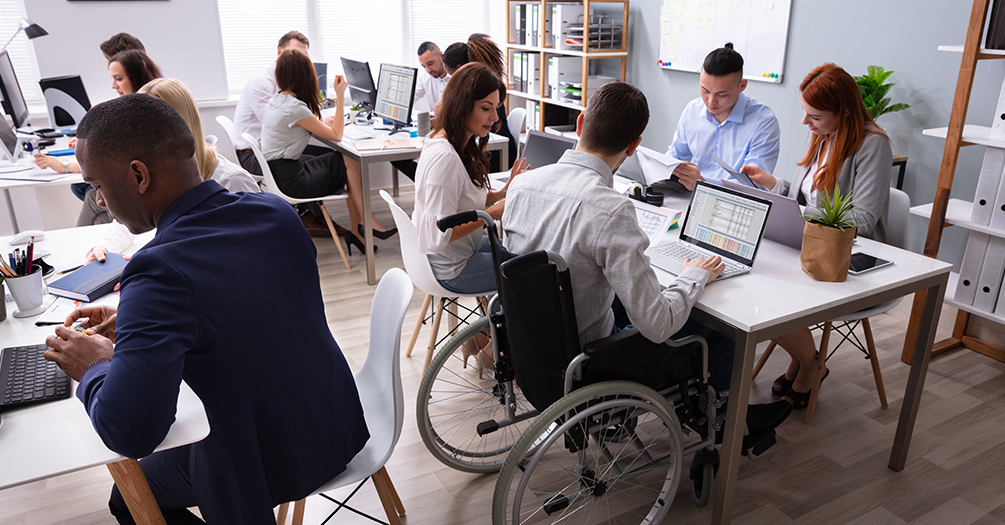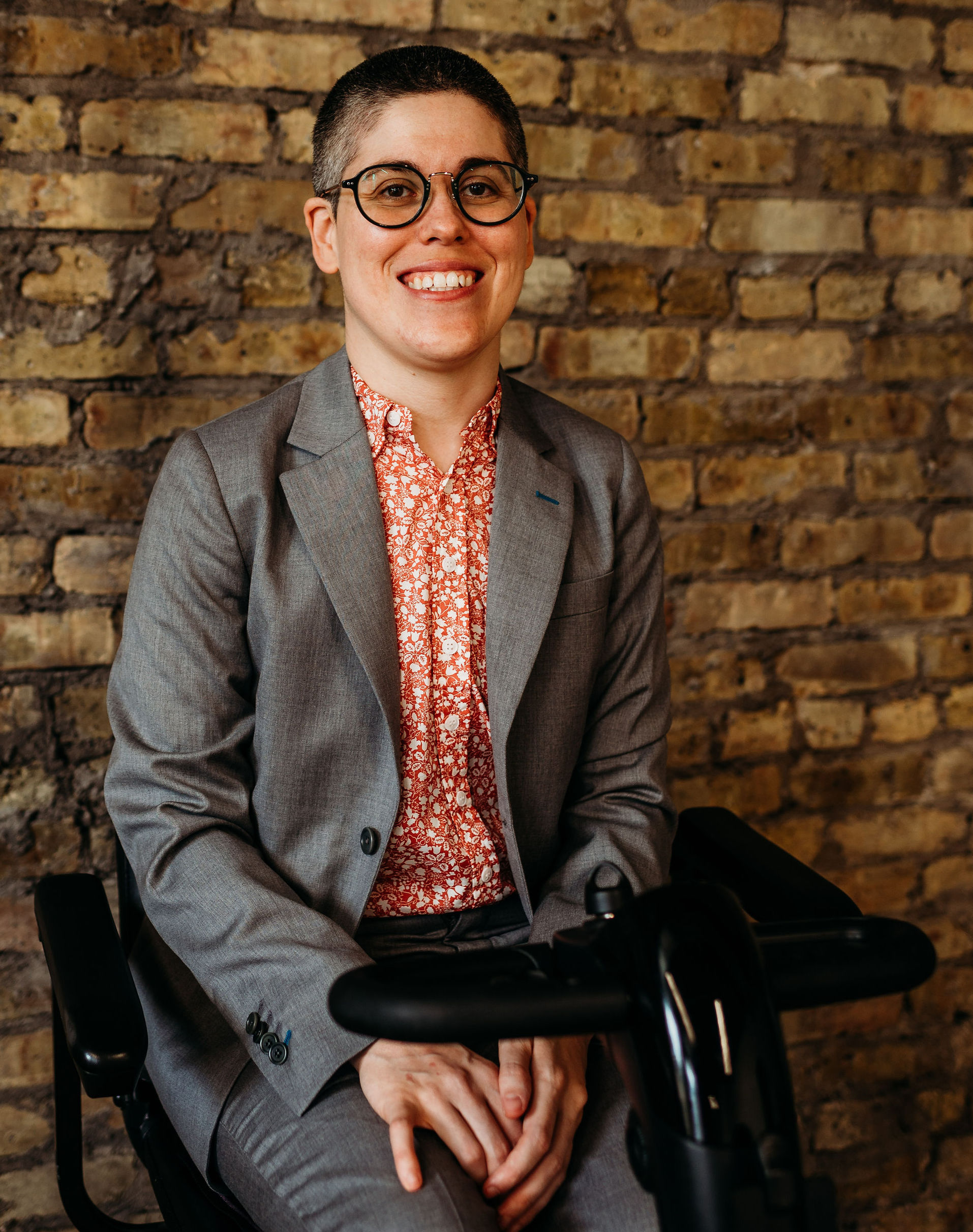How we follow through on public health’s commitment to disability communities

Kara Mannor
MPH ‘21, PhD Student in Epidemiology
Author's Note: I use the terms disabled and persons with disabilities in this post. Some people prefer persons with disabilities as person-first language, or “putting the person before the disability.” In my analysis, disability is not separate from or a modifier of one’s personhood, so I use these terms interchangeably. In some settings disabled people use reclaimed insider language such as “crip” or “cripple” or even more specific terms, such as neurodivergent, to describe themselves. It is a good practice to ask people what terms they prefer you use in describing them or their communities, rather than making assumptions.
When I first started working in public health over a decade ago, I wasn’t at all interested in studying the health of disabled people. I was more interested in how social conditions—where people live, their access to basic necessities, and the political and economic forces that create those conditions—impact the health of populations. While that interest was very much informed by my experiences as a person who has had a disability for my entire life, when I looked to public health, I didn’t see that approach reflected in the field’s research or practice. Instead what I mostly encountered was a history of public health campaigns that promoted fear of disabled people and research agendas that saw disabled people primarily as groups of patients whose bodies or minds needed to be “fixed.”
This approach to disability is what disability studies scholars and disabled activists have come to call the medical model of disability. According to the medical model, disability is a specific medical condition such as Down’s syndrome, cerebral palsy, or conditions associated with low vision or low hearing. Because of this focus on individual health conditions, public health research and prevention efforts that are guided by the medical model prioritize “restoring” disabled people’s bodies to “normal” functioning. For example, a research study might investigate the best methods for improving limb function among people with spinal cord injuries to improve their participation in community settings or an intervention among deaf children might emphasize lip reading to improve communication.
The medical model tends to be the dominant model of disability not only in public health but also in Westernized societies like the United States more broadly. This means that it has been a part of our everyday thinking and assumptions about persons with disabilities as abnormal, deficient, and burdensome on society. Disabled people’s activism has taken aim at these types of assumptions—and how these assumptions shape the unequal world we live in—for decades. In their campaigns for equal access to all forms of participation in society, disabled people have contested the idea that normal bodies exist, much less that “being normal” was a primary issue or goal for disabled people. Instead, they direct their attention to the social and built environment. These are things that would need to change to improve the lives of disabled people, not how their bodies work. This is the kind of collective analysis and action—some of which is portrayed in the award-winning documentary Crip Camp—that would come to be known as the social model of disability.
The social model of disability was first written down formally by social work scholar and activist Mike Oliver in 1983. The social model of disability moves away from the medical model by making a distinction between bodily impairments that individuals experience and disabling environments. This distinction was inspired specifically by the work of the Union of the Physically Impaired Against Segregation—a group of individuals who were confined in residential institutions in the United Kingdom and who were advocating for autonomy for disabled people. Disabling environments include the built environment—such as entryways without ramps and building signage without Braille—and the social environment—such as assumptions about the quality of life of persons with disabilities that influence access to care. Further, while the social model of disability does not reject the importance of medical care in supporting the wellbeing of persons with disabilities, it does emphasize the knowledge and expertise of disabled persons in understanding the challenges they face in navigating a society that was not built with disabled people in mind.
In public health, we can use the social model of disability to improve the social and economic conditions for disabled people that advance health equity. For example, instead of primarily addressing limb functioning for individuals with spinal cord injury to improve community participation, we can ask research questions about the availability of transportation options, accessible gathering spaces, or disability-centered organizations in a community. Greater embrace among public health researchers and practitioners of the social model of disability will help advance the field by ensuring that disabled people are affirmed in our discipline’s ethical commitments to support the flourishing of individuals and communities. Further, public health research and practice that better reflects the needs and desires of disabled people allows more individuals to imagine themselves in public health work, opening the door for disabled people to contribute to the field.
Read more from Kara in “Disability justice and Public Health” on The Pursuit blog.
About the Author
 Kara M. Mannor (she/hers) is a PhD student and Rackham Merit Fellow in the Department
of Epidemiology at the University of Michigan School of Public Health and a 2021 graduate
of the school’s Population and Health Sciences MPH program. Mannor’s research interests
include advancing conceptual and methodological approaches for studying relationships
between ableism and health outcomes. Her anti-ableist approach to public health is
informed by her social position as a disabled person and commitment to disability
justice as a community organizer. She also enjoys playing word puzzles and being a
cat parent.
Kara M. Mannor (she/hers) is a PhD student and Rackham Merit Fellow in the Department
of Epidemiology at the University of Michigan School of Public Health and a 2021 graduate
of the school’s Population and Health Sciences MPH program. Mannor’s research interests
include advancing conceptual and methodological approaches for studying relationships
between ableism and health outcomes. Her anti-ableist approach to public health is
informed by her social position as a disabled person and commitment to disability
justice as a community organizer. She also enjoys playing word puzzles and being a
cat parent.
